Gift-giving is a long-standing tradition in Japan. For thousands of years offerings of fruit have been made at shrines and the graves of ancestors.
This translates into a modern-day culture of gift-giving between friends, family, and guests where the best gifts are the most perfect.
Today in Japan there is a whole industry built around perfecting fruit which has become as famed for its beauty as it is for its price. Here is our guide to the top 10 most expensive fruits, melons, and berries grown in Japan.
Sekai-Ichi Apple
The Sekai-Ichi apple is a cross between Red and Golden Delicious apple varieties and since its creation in 1974, it has become known as the best apple in the world.
The name Sekai-Ichi literally means “world first” and its hefty $21 price tag certainly reflects this.
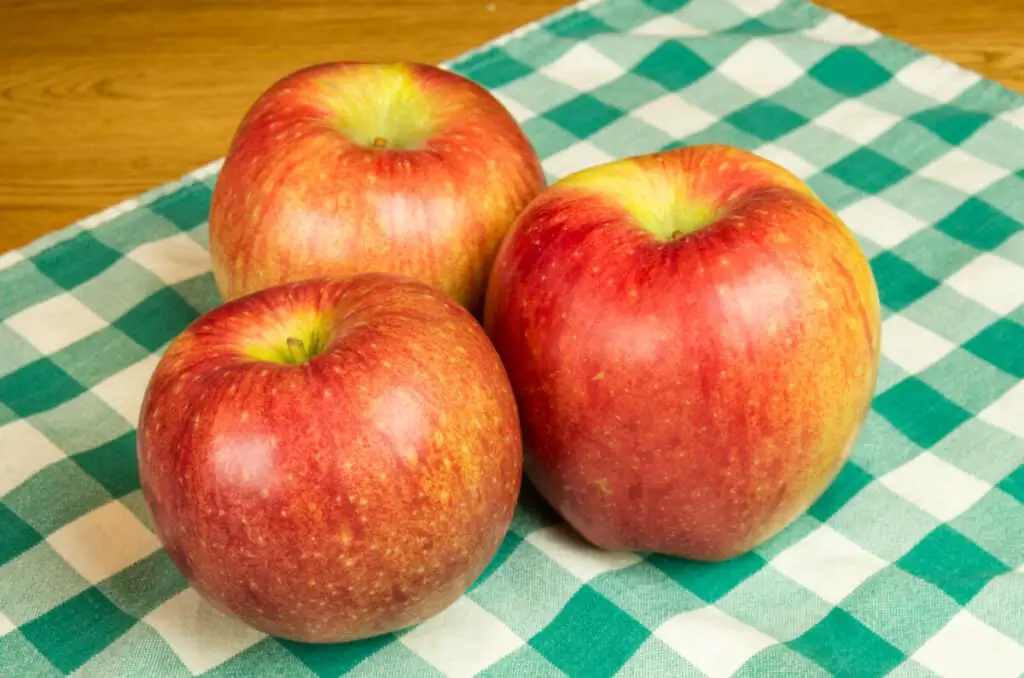
Each apple begins life with careful hand-pollination by farmers before growing to its full size of up to 2 pounds. The apples are carefully inspected before harvest to ensure perfect, almost cartoon-like color and shape.
Sekai-Ichi apples are washed in honey prior to sale and are best enjoyed in simple slices to fully appreciate the delicious flavor.
Dekopon Citrus
This beautiful fruit is a hybrid cross between Kiyomi tangor and Ponkan mandarin oranges. The thick skin is easy to peel and reveals a firm, seedless flesh with an intense but incredibly sweet orange flavor.
Each orange costs at least $13 due to the lengthy process of harvesting and curing the fruit. Once Dekopon oranges are picked, they must be matured for 20-40 days to achieve Dekopon certification where they have a high sugar content but less than 1% citric acid.
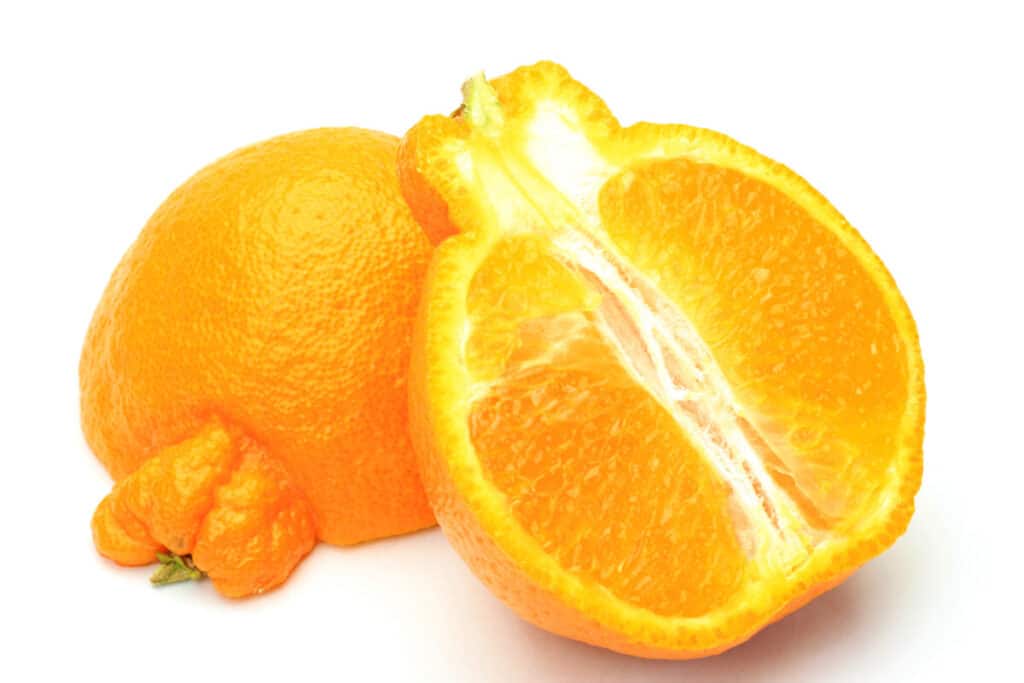
There are many different brands of Dekopon, but only those who meet the citric acid, size, and shape requirements can be officially sold as Dekopon in Japan.
Shirou Houseki Strawberry
Shirou Houseki, or White Jewel, strawberries are one of the most unique-looking gifts you can find in Japan.
They have white flesh dotted with brilliant red seeds which seem in stark contrast to their complex flavor of tangy pineapple and brilliantly sweet candy.

There are over 300 different varieties of strawberry in Japan, but only a few of these achieve the distinctive white coloring of Shirou Houseki. Farmers must limit the amount of sunlight the plants receive to prevent color from forming. Even after careful cultivation, only 10% of the fruits are white enough to be sold as White Jewel strawberries.
The amount of care taken to grow just one Shirou Houseki justifies the cost of $10 per strawberry.
Bijin-Hime Strawberry
If you thought the White Jewel strawberries were pricey, get ready for Bijin-Hime. These strawberries translate as “beautiful princess” and regularly break records for the most expensive strawberries on the Japanese market.
A single record-sized Bijin-Hime strawberry once sold at market for a staggering $1,993! These special strawberries are grown by just one man, Okuda Nichio, after 15 years of trial and error.
Each pool ball-sized berry takes at least 45 days to grow and is one of just 500 strawberries produced each year.
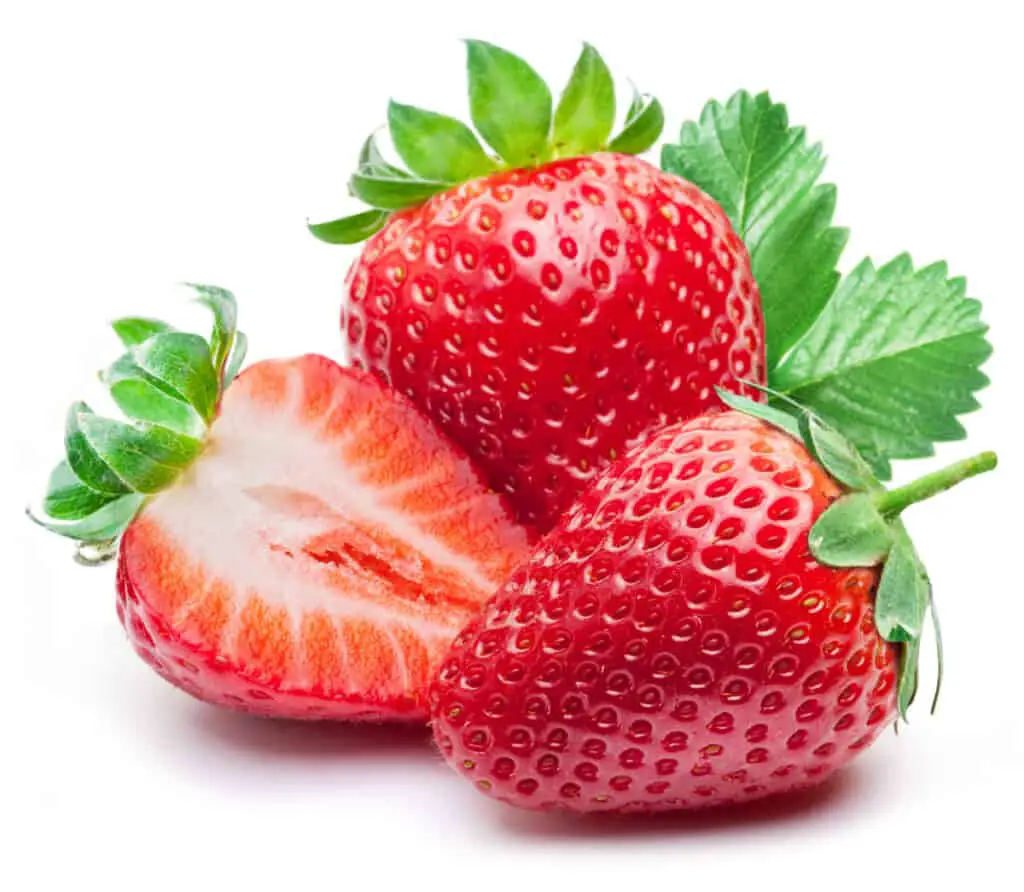
Bijin-Hime is particularly sweet owing to its high Brix value. A Brix value indicates how much sugar is dissolved in a liquid and can be used to measure the sweetness of fruits.
Where a normal strawberry has a Brix value of just 10%, Bijin-Himestrawberries reach up to 15% making them the sweetest naturally produced strawberry money can buy.
Sembikiya Muskmelon
Sembikiya was established in 1834, making it the oldest and most established luxury fruit provider in Japan. Their muskmelon is their most celebrated, and expensive product with one prize example fetching $28,000 at auction in 2016.
If this is a little out of your budget, you can still find cheaper specimens for sale at around $125 each. Although they aren’t prize-winning, they will certainly still blow you away with their sweet, melt-in-the-mouth flavor and beautiful green flesh.
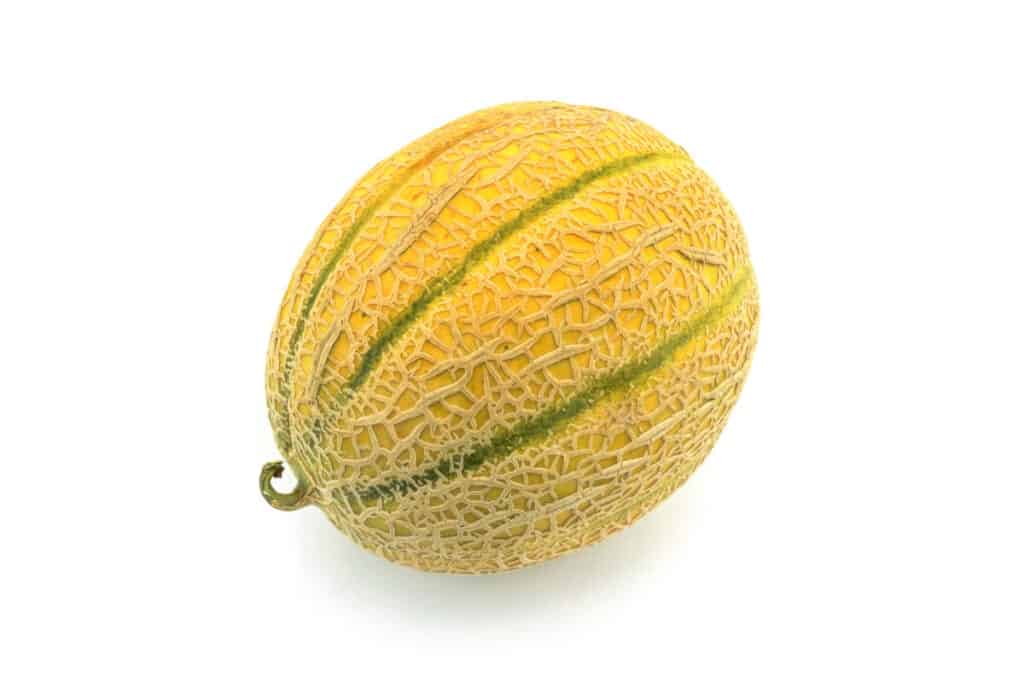
One of the things that makes Sebikiya muskmelons so expensive is their meticulous cultivation. Early in the growing season, farmers carefully select one melon before removing the other fruits from the same stem.
Combined with a carefully moisture-controlled environment, this allows the flavors, sweetness, and aromas to concentrate in this single melon.
Densuke Watermelon
Densuke watermelon can only be grown in Hokkaido on the north coast of Japan.
These unique melons can cost as much as $250 per pound, with one melon fetching an impressive $5,800 at a 2008 auction. Densuke watermelons cost so much for several reasons.
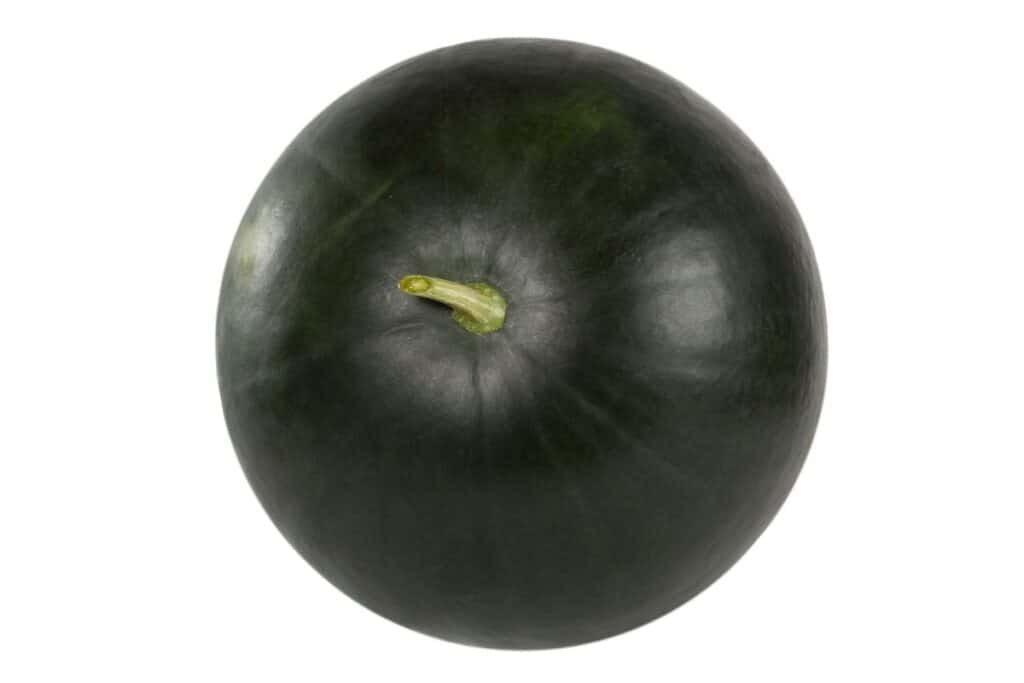
Firstly, there are only 100 melons grown every year. Second, they are identified by their incredibly dark, nearly black, rind which houses a very sweet, almost seedless flesh. Unlike other types of super-premium fruit sold in Japan, these melons are grown to be eaten.
Their true beauty lies in the contrast between their dark rind and the brilliant brightness of the flesh within which can only be revealed once they have been sliced open.
Taiyo no Tamago Mangoes
Taiyo no Tamago means “egg of the sun” and is an apt name for these perfect, egg-shaped mangoes.
Taiyo no Tamago mangoes are primarily farmed in the Miyazaki prefecture on Kyushu Island where the subtropical climate is ideal for these fruits.
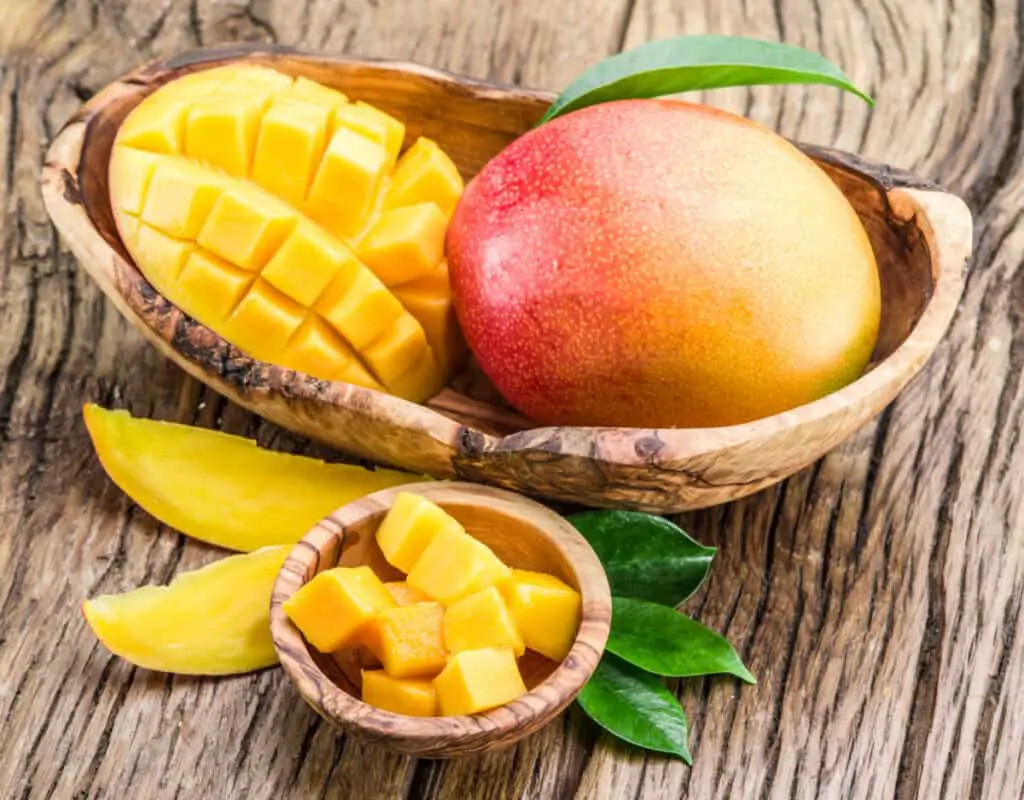
Farming is labor-intensive and involves shrouding the mangoes in netting to ensure even sun exposure across the skin and allowing the mangoes to fall naturally from the tree rather than picking them.
This maximizes the sugar and flavor of the flesh.
To be classified as Taiyo no Tamago by the Miyazaki Agriculture Economic Federation each mango must weigh 350 grams (or 12 ounces), have a deep red color covering at least half of its rind, and have a minimum sugar content of 15%. The price of these fruits starts at $50 for the very cheapest specimens but can reach as high as $3,500.
Ruby Roman Grapes
Ruby Roman grapes grow in the Ishikawa prefecture, reach the size of a ping pong ball and, as the name suggests, boast a deep ruby red color.
A bunch of these amazing grapes costs between $357-$4,000 with a record-breaking bunch selling for $11,000 in 2019.
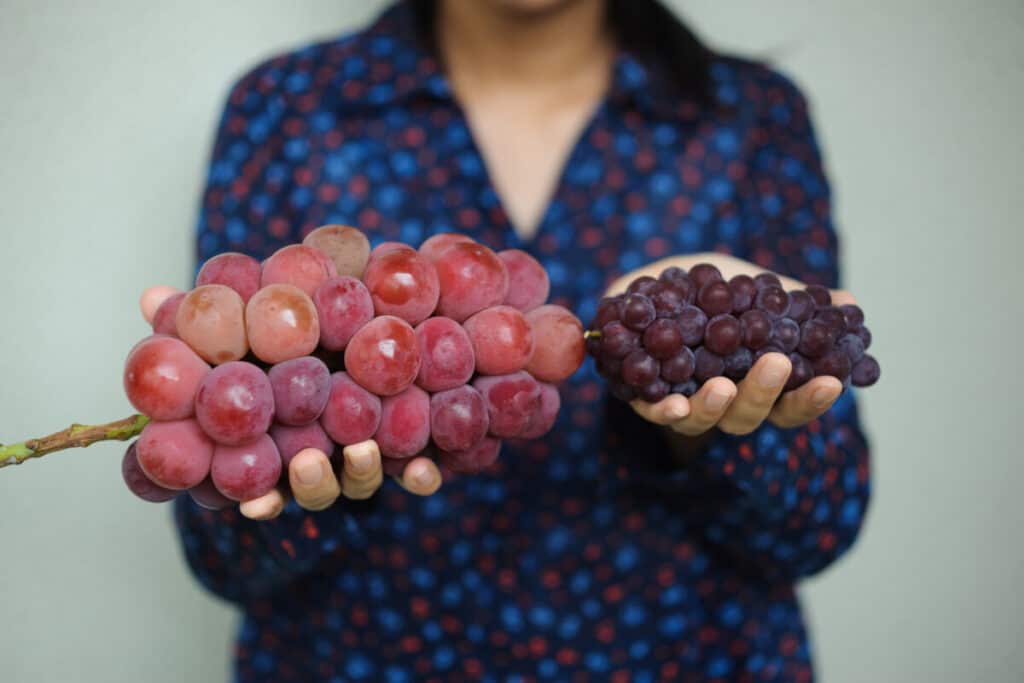
Certification of Ruby Roman grapes is very strict, with each grape inspected individually to ensure they meet the criteria. They must be perfectly round, weigh approximately 20 grams (which is 4 times the size of a normal grape) and taste very sweet with a sugar content of at least 18%.
Classification of these grapes is so closely protected that in 2019 only 25,000 bunches were awarded the coveted title of Ruby Roman.
Zentsuji Watermelon
Although one of the most famous premium Japanese fruit, the Zentsuji, or square, watermelon is also one of the cheapest fruits by weight on this list.
These melons look like conventional watermelon, except for one key difference: they are square. This striking effect is achieved by growing the melons in a cube-shaped box which constricts the natural growth of the fruit.
Many stories exist to explain how melons started to be grown in this way, from innovative farmers trying to ease transport of their products, to attempts to make a melon that fits perfectly in a refrigerator.
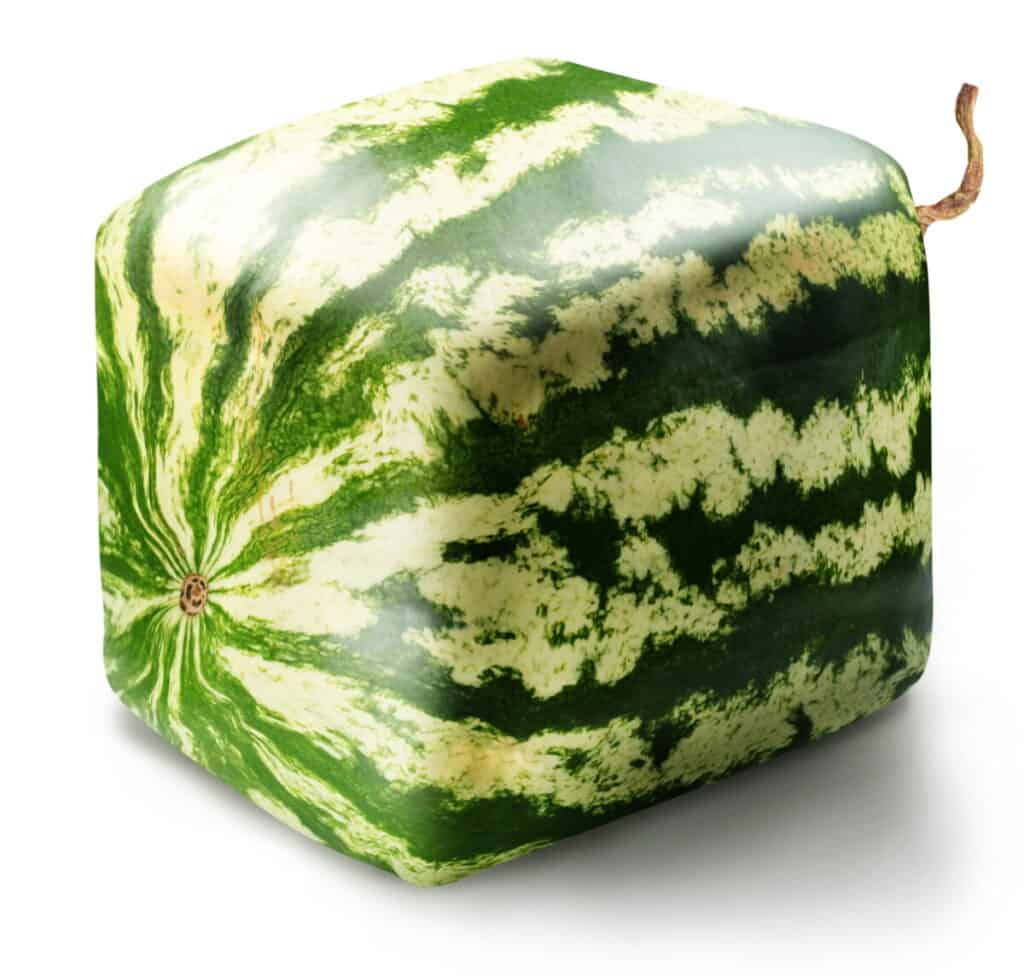
Either way, the Zentsuji watermelon has become iconic. A Zentsuji watermelon can cost between $80 and $200 depending on its size, color, and shape.
Unlike other fruits on this list, they are not typically sold to be eaten but to display. The melons are often sold underripe and aren’t particularly sweet, so are usually gifted for use as a decoration.
Yubari King Melons
No list of premium Japanese fruit would be complete without the Yubari King melon, a type of cantaloupe prized for its sweetness and perfectly round, blemish-free rind. These exquisite fruits are grown on the island of Hokkaido in northern Japan.
In Japanese culture, the first fruits of the harvest are seen as bringers of good luck, so tend to fetch the highest prices. In 2016 a pair of Yubari King Melons sold for an astonishing $45,000 which broke records not just for Yubari King melons, but for all Japanese fruit that year.
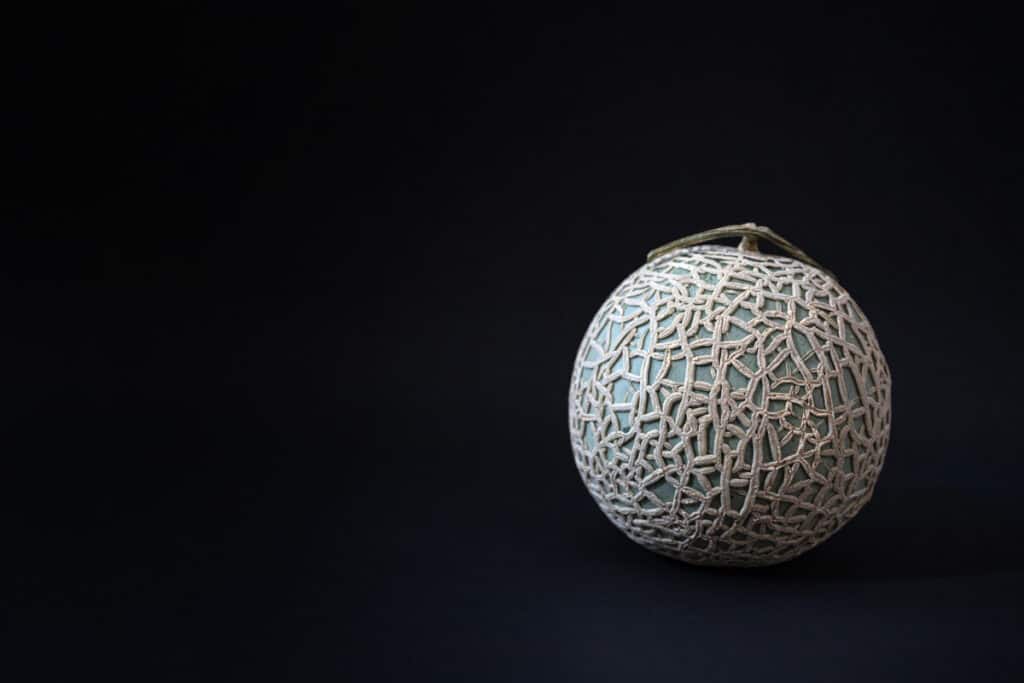
As with Sembikiya muskmelon, each melon is carefully inspected early in its growth. All but those with the best shape and rind are removed from the stem to allow the flavors, sugar, and juice to concentrate in just one fruit.
The lucky Yubari King melon left on the stem is grown in soil mixed with volcanic ash and is protected from harsh sunlight by its own sunhat.
These melons are world-renowned for their complex, aromatic flavor, perfectly uniform and round shape, and flawless rind.










